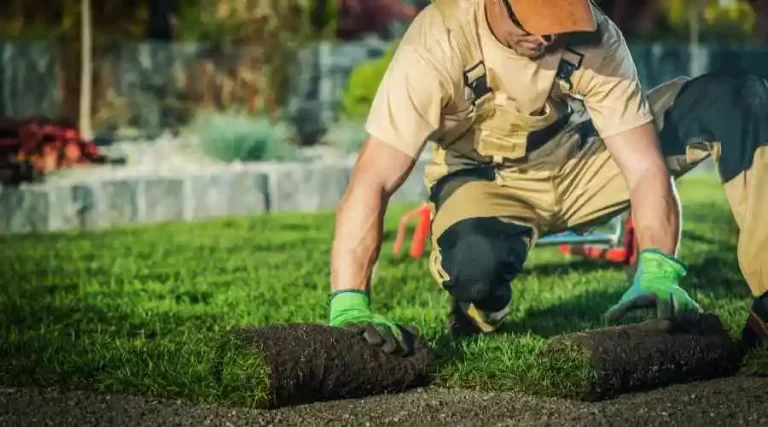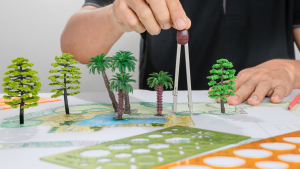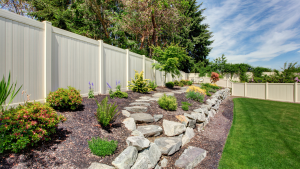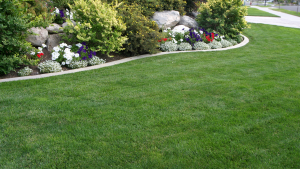You can plan for the next Ida before hurricane season. Proactively preparing your Baton Rouge house for a storm may reduce damage and provide peace of mind.
When a storm approaches, there’s more to do than gather supplies and sandbags. Including these nine hurricane-resistant landscaping ideas on your Louisiana property will make it more wind and water-damage-resistant. In this manner, you may reduce post-storm cleaning while assisting your neighbor.
1. Plant wind-resistant trees
Aside from flooding, a falling tree is the most serious threat to your and your property’s safety. A wind speed of 150 mph (as experienced during Hurricane Ida in 2021) may rip a tree out of the ground like a weed.
Does this imply that you must remove all the trees in your yard? No. Trees are crucial to a healthy environment for various reasons, including providing shade, functioning as nesting places, and lowering stormwater runoff. Knowing which trees to plant and how to grow them will help lessen the danger of their failing in a storm.
What makes a tree species resistant to wind? Look for the following characteristics:
- Native
- Radial, deep roots
- Slow-growing
- The center of gravity is low.
- Small, fine-textured deciduous leaves
Louisiana State University recommends the following wind-resistant trees:
- Bald cypress
- Live oak
- Sabal palm
- Windmill palm
- Ironwood
- Shumard oak
- Winged elm
Trees to avoid:
- Pecans
- Pines
- Red cedars
- Ornamental pears
- Willows
- Silver maples
- Box elders
- Cottonwoods
- Hickories
- Water oaks
2. Plan tree placement
You’ve chosen your wind-resistant trees; now, you must determine where to put them. The first step is to rule out regions near your home or electricity lines. If you must plant a tree near a power line, choose a small tree such as a dogwood, crepe myrtle, or wax myrtle.
Make sure your planting place has a deep water table and at least 3 feet of soil depth (be cautious if you’re planting next to a sidewalk). Follow these instructions to calculate the distance to the water table before planting any large trees:
- Make a couple of 2-3 foot deep holes.
- Water may not materialize for up to 4 hours. If there is no water, you may plant a huge tree.
- If water emerges, determine the distance between the two.
- water’s surface and the soil’s surface. Choose a small tree if it is less than 18 inches tall. Choose a small or medium-sized tree if it is taller than 18 inches.
Soil compaction also impacts a tree’s capacity to survive harsh weather. Aerate your lawn once a year to break up dirt and provide a better habitat for new growth.
Our last piece of tree planting advice is to combine them to provide wind protection. According to research by the University of Florida, merely planting trees in groups may enhance their odds of surviving a hurricane by 10%.
3. Choose salt-tolerant plants
Have you ever heard of automobiles decaying miles from shore after a hurricane? In regular weather, the salt spray may corrode metal up to 10 miles inland, and a hurricane stretches that radius much more. Plants are much more delicate than metal buildings, and those in your Baton Rouge garden are vulnerable to salt damage after a tropical storm.
Salt dehydrates plants, hinders roots from receiving water, and limits efficient nutritional absorption. In short, it might be the end of your cherished garden bed.
Consider adding salt-tolerant plants that can withstand strong shaking to your garden when it’s time to refresh it.
Salt-tolerant plants for Louisiana
These plants are both salt-tolerant and native. Native plants are more hardy since they have evolved to coastal settings.
Salt-tolerant shrubs:
- Inkberry
- Wax myrtle
- Elderberry
- Southern barberry
Salt-tolerant grasses:
- Gulf bluestem
- Coastal dropseed
- Salt meadow cordgrass
- St. Augustinegrass
Salt-tolerant vines:
- Camphor daisy
- Seaside goldenrod
- Beach morning glory
- Blazing star
- Swamp rose
- Rose mallow
4. Keep plants pruned and trimmed
The first step is to choose plants, but caring for them is as crucial. When did you cut your hedges using a pair of shears? Weak branches are ideal targets for high winds, and the last thing you want is a wayward branch smashing your vehicle glass.
Healthy plants, in general, are far more likely to withstand a storm, and careful trimming will keep them in excellent form. Clear away debris after you’re finished to preserve ventilation and avoid sickness.
When it comes to plant maintenance, remember that storm protection is all year long. Inspect for symptoms of illness or poor health regularly, such as discoloration, dead foliage, and insects. Trees, in particular, should be monitored since concealed damage may lead to a weaker tree.
5. Assess drainage
With a hurricane, you have to be concerned about more than just high winds. Constant severe rains may wreak havoc on your house and yard. It is critical to assess your drainage systems to minimize rainwater damage.
You want to make sure that water may readily flow toward the closest storm drain. That means keeping vegetation, fencing, and hardscaping — such as gazebos or fire pits — out of the way.
If your yard has poor grading, you may need to take additional steps:
A rain garden is a collection of plants planted on a low slope to absorb rainfall and filter it for free.
French drains are gravel-filled ditches that transport water to the point of escape.
A dry well is a large depression filled with sand.
Rocks that is the finishing point for downspouts or French drains.
Finally, maintain your gutters and downspouts. They have a crucial duty — protecting your roof, foundation, and siding from water damage after heavy rain — but they can’t accomplish that if they’re blocked with debris. They should be cleaned twice yearly, preferably in the autumn and spring.
6. Secure fencing
When considering hurricane-resistant landscaping, start with limiting possible wind damage. A slatted or chain-link fence with gaps allows wind to move through without producing resistance.
Start with limiting possible wind damage when considering hurricane-resistant landscaping. A fence with holes, such as slatted or chain-link fences, allows wind to flow through without producing resistance.
A solid fence, on the other hand, does not allow wind to get through, resulting in a high force of contact and a high risk of damage. If you want to retain your sturdy fence, use brackets to support the posts on fence panels. You may also remove a single fence panel on each end to allow pockets of wind to pass through.
Materials are also important. Metal fences last much longer than wood fences. Steel and wrought iron can withstand battering, but wood rapidly collapses under the weight of a large limb or tree. Vinyl is another salt-resistant, waterproof fence option, although it is less durable than metal.
7. Use soft mulch
Mulch keeps plants healthy, but the incorrect sort might harm them during a storm. Replace any hard mulches, such as river rock, pea gravel, and landscape glass. Hurricane-force winds will propel them toward objects like your vehicle, windows, and siding.
Soft mulches such as wood chips, shredded leaves, pine needles, rubber nuggets, and shredded bark should be used instead. They could still inflict a few scratches, but the damage will be modest.
8. Add a retaining wall
A retaining wall is a small wall that retains the soil behind it in place. In the case of flooding during a storm, it may prevent water from reaching your home’s foundation. Retaining walls, often composed of stone or concrete, may be submerged for an extended period without incurring harm.
They not only restrict the flow of water but also assist in avoiding erosion on your landscape all year. If your yard has a slope, build a retaining wall to break up the gradient and slow down water, allowing it to sink into the ground rather than rushing over the surface and bringing particles.
9. Remove and secure storm hazards
In a cyclone, seemingly innocuous decorations may turn into weapons. Many of your landscape’s finishing touches must be stored somewhere safe before a hurricane hits. If a storm is on the horizon, dining tableware, garden furniture, toys, and bicycles should be transferred to a safe spot.
Turn a trellis or playground equipment on its side if you can’t carry it inside. Group them to limit the likelihood of them rolling away. Other constructions, such as sheds, should be secured to the ground by eyebolts and concrete footings.
Why hurricane safety matters in Baton Rouge
Nothing comes free, and the cost of Baton Rouge’s rich cultural heritage and vibrant community is the ever-present danger of storms. From Hurricane Katrina’s epic devastation to Hurricane Ida’s a close call with Baton Rouge in 2021, we’re no strangers to power disruptions and storm season turmoil.
Last year, local restaurants, motels, and farms pitched in to help individuals displaced by Hurricane Ida. Please don’t wait until it’s too late; take precautions to safeguard your landscape so you can rest easy when it rains.
Hire a Baton Rouge lawn pro.
Hurricane safety is no laughing matter. You could feel better knowing it’s in the hands of an expert. Hire a ZDR Baton Rouge Landscape Pros staff to handle installation requirements, yard cleaning, and regular maintenance to maintain your yard pristine.





